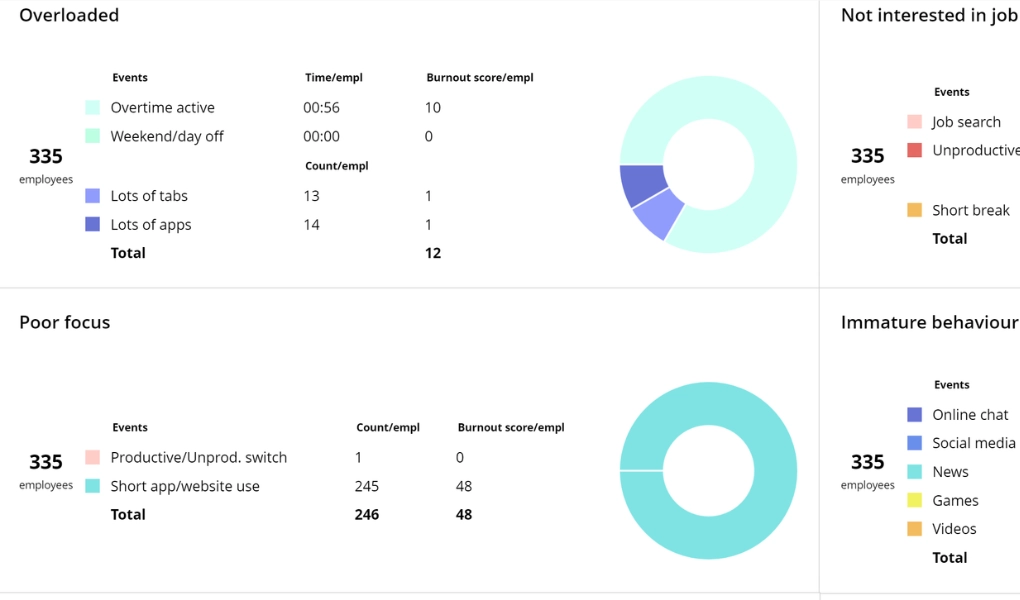






In WorkTime, you can set the permitted burnout score maximum and observe if employees are within the allowed range.

WorkTime trial is all inclusive:
all features, unlimited employees.
No credit card required.
$6.99
/ employee / month billed monthly
$8.99
/ employee / month billed monthly
$10.99
/ employee / month billed monthly
